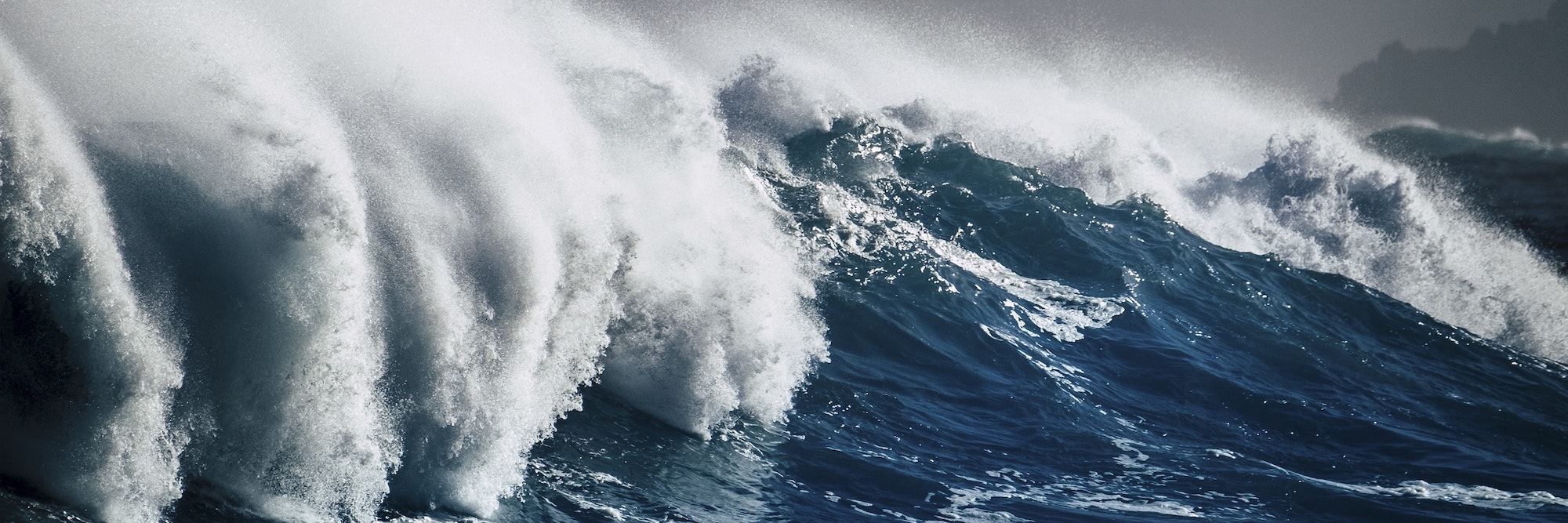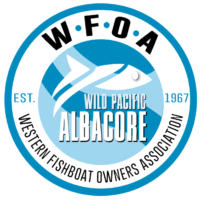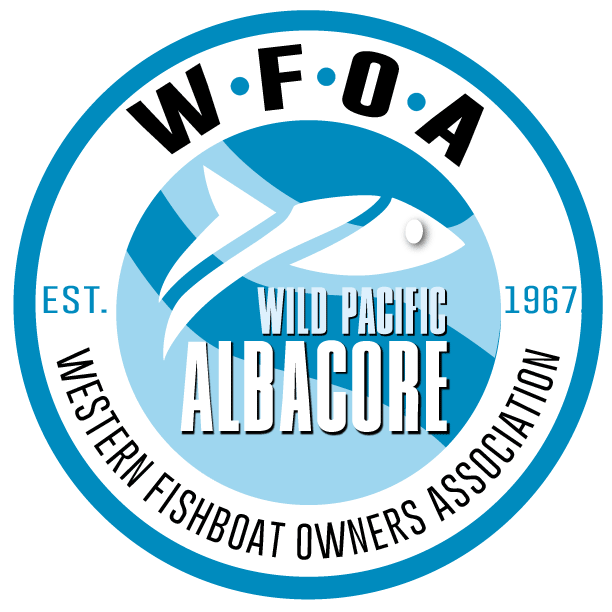Rules & Regulations
Albacore Management Overview
IATTC Res C-22-04_North-Albacore-Harvest-Strategy
The Western Fishboat Owners Association has long believed that management of Highly Migratory Species (HMS) such as albacore should be coordinated on an international basis. The main reason for this is that these species have no national boundaries; to manage one nation’s resources while others go unregulated or ignore new management measures would put an unfair burden on the well managed nation’s fishing communities such as the U.S.
This section contains information on past, present, and future regulation and management of HMS. Tuna and tuna-like species are being managed at all levels of government. This includes international bodies such as the Inter-American Tropical Tuna Commission (IATTC) and the newly formed Western and Central Pacific Fisheries Commission (WCPFC). The WPCFC was formed from the Multi-High Level Conference (MHLC) which involved 28 nations beginning in 1996; agreement was reached in 2000. Since then the Western and Central Pacific Fisheries Commission (WCPFC) has been formed with its headquarters in Pohnepei, FSM.
WFOA now sits on the U.S. delegation to the Western and Central Pacific Fisheries Commission (WCPFC) as well as the Inter-American Tropical Tuna Commission (IATTC). Both of these bodies are RFMO’s that regulate highly migratory species across the Pacific.
At the federal level we hold the troll representative seat on the Pacific Fisheries Management Council (PFMC) HMS advisory panel. The PFMC is now involved with HMS, especially albacore, that has been under the PFMC Fisheries Management Plan (FMP) since 2002. WFOA also works with the Western Pacific Management Council (WPFMC) and other federal bodies and agencies that are responsible for managing the resource.
International Management Overview:
Western & Central Pacific Fisheries Commission (WCPFC):
In a nutshell, the WCP Convention created a permanent Commission made up of one voting member from each participating nation (each party), as well as three separate advisory Committees (the Scientific, Compliance and Northern Pacific Committees). The Commission will design and implement comprehensive fisheries conservation, management, and enforcement systems for the high seas tuna fisheries, and also help to ensure adoption of compatible conservation programs within the Exclusive Economic Zones (EEZs) that are under the jurisdiction of various Pacific island and coastal nations.
To add to the complexity of managing an international fishery that has no boundaries most of the Eastern Pacific Ocean management is under the measures and rules of the Inter-American Tropical Tuna Commission (IATTC).
Depending on each fishery’s status and characteristics, conservation measures may include any combination of time/area closures, gear and technology restrictions, bycatch control regulations, total allowable catch limits, or fishing effort controls. Fishing vessels in the WCPFC and the IATTC Convention areas will also be required to carry Vessel Monitoring Systems (VMS) satellite tracking units and participate in observer programs.
Meanwhile, participating nations will be required to share their harvest and other fisheries data, their high seas enforcement capabilities, and lists of all vessels flying their flag and fishing within the Convention area. Each nation will be required to cooperate with one another, administer any national catch and/or effort allocations to their fleets, and implement compatible conservation and management programs within their national waters (their EEZs). It would be fair to say that the WCP Convention is the most ambitious effort to prevent overfishing ever witnessed, and it will dramatically affect dozens of countries as well as thousands of fishermen.
Management Bodies
NOAA Fisheries
NOAA Fisheries is responsible for the stewardship of the nation's ocean resources and their habitat.
PFMC
The Pacific Fishery Management Council manages fisheries for approximately 119 species on the West Coast of the United States.
WPRFMC
Western Pacific Regional Fishery Management Council
is one of eight regional fishery management councils established by Congress in 1976.
WCPFC
The Western and Central Pacific Fisheries Commission was established by the Convention for the Conservation and Management of Highly Migratory Fish Stocks in the Western and Central Pacific Ocean (WCPF Convention) which entered into force on 19 June 2004.
IATTC
The IATTC is the international commission responsible for the the long-term conservation and sustainable management of tuna and tuna-like species and other species of fish in the Eastern Pacific Ocean.

Regulatory Codes and Acts
The following are applicable to high seas fishing vessels and the albacore tuna fleet.
Permits and Regulations
DOWNLOADABLE UPDATED REGS AND RULES INFO 2020:
- Foreign Vessel Report Form
- ALBACORE REGS 2022
- Tim Frawley – NOAA-IUU Letter
- Net Marked Albacore Report Form
- NEW – IATTC Res C-22-04_North-Albacore-Harvest-Strategy
INTERNATIONAL:
OTHER AGENCIES:
PUBLICATIONS:
MSC Certification
The Marine Stewardship Council is a nonprofit with the goal of ending overfishing globally. By becoming certified by the MSC, we are showing that our fishery meets best practices for sustainable fishing. Learn more at https://www.msc.org/en-us
WFOA Members: If you are a U.S. WFOA member in good standing, with all dues and other obligations up to date by June 30, you are automatically under the certification and buyers can verify your eligibility from the list posted below.
Non-WFOA Members: As this certification covers the entire U.S. troll and pole and line (baitboat) fishery, it is open to non-WFOA members though your buyers at no cost if the buyer is designated. The buyer needs to verify the vessel and request it be placed on the list by WFOA prior to unloading.
Labor Self Declaration: For those involved in MSC – WFOA/AAFA just completed and MSC uploaded our Labor Self Declaration to the MSC website at:
AAFA WFOA labor statement 2019
AAFA Vessels: AAFA vessels are under the same MSC certification as WFOA but will maintain their listings separately.
Canadian Vessels: Canadian vessels are under a separate certification. Buyers also have certain requirements. There is a sign-up procedure with the Canadian Highly Migratory Species Foundation with contact information.
MSC Designated Albacore Buyers July 1, 2022 – June 30, 2023
NOTE: Albacore Buyers wishing to sell MSC albacore can request an annual agreement by contacting WFOA, and also their facility being certified by MSC.
Pacific Seafood Brookings, LLC
Pacific Seafood Charleston, LLC
Pacific Seafood Warrenton, LLC
Safe Coast Seafoods – Ilwaco, WA
WFOA will maintain and post on this page a list of designated MSC buyers in the MSC chain of custody (CoC). Qualified buyers on this list have agreed to pay a small fee on ALL albacore they buy. This fee will NOT be deducted from WFOA member proceeds. These funds will be for cost-recovery of funds spent on certification and for future surveillance audits and re-certification. Buyers not complying with terms of the agreement will be removed from the designated buyer list and MSC and “MSC CoC Certification Bodies” will be notified.
NOTE: Non-contracted albacore buyers using the WFOA/AAFA MSC certification in their sales or COC are in violation of the terms of the certification and will be reported to the certification bodies and MSC.
VESSEL QUALIFYING CRITERIA – Buyers need to verify:
- U.S. Documented or State Registered vessel
- Valid HMS permit
- Up to Date NOAA Issued Logbook
- HSFCA registration if fishing beyond 200 miles
- If fishing west of 150W longitude, vessel must be registered with WCPFC and in compliance with their requirements
- Listed vessel on the IATTC registry
- Only troll or baitboat methods on that particular trip. No albacore will be MSC eligible if landed on a trip during which albacore were caught by any other method or gear type.
- Only owners of MSC-qualified vessels can directly sell MSC-certified albacore off-vessel; otherwise there must be a fish ticket or bill of lading from the first buyer who certifies that the albacore came from MSC-qualified vessels. Secondary sellers of MSC-eligible albacore must also obtain MSC Chain of Custody certification.
- To sell MSC-certified albacore directly to the public, vessel owners must comply with MSC Chain of Custody requirements. To meet these requirements, a vessel owner must sign a Designated Party Agreement with WFOA. This also applies to vessels processing at sea or in the harbor. A secondary requirement is a “fish and game sellers license number” issued by your state. (If you do not intend to use the MSC certification, then you have no such requirements.)
MSC Contact for Questions:
Dan Averill, Fisheries Outreach Manager-Americas,
Marine Stewardship Council (MSC), 2110 N Pacific St., #102
Seattle WA 98103
Office: 206-631-2493
Mobile: 206-910-8900
Fax: 206-547-1107
Skype: dan.averill (Seattle)

